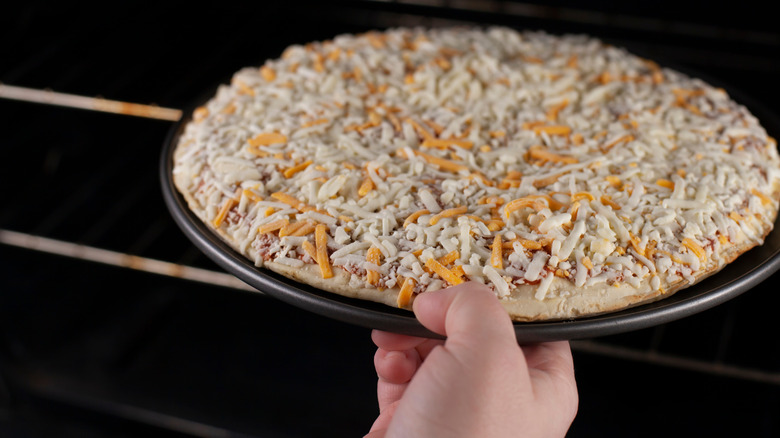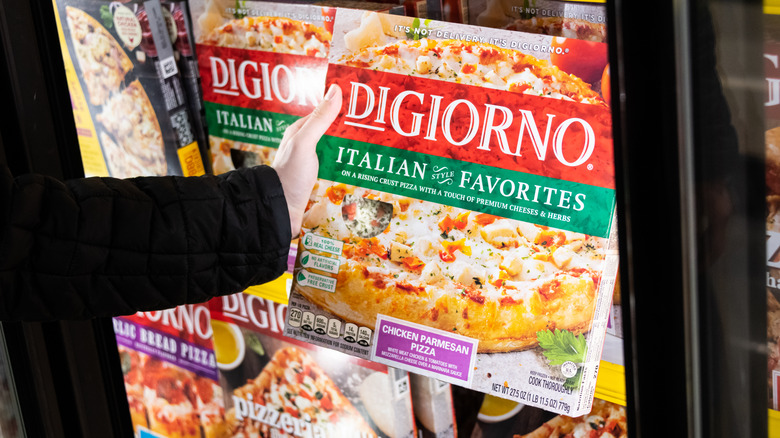The Gray Plastic Underneath Your Frozen Pizza Actually Serves A Purpose
There are a lot of food opinions on the internet, and some of the most passionate are about pizza. People have thoughts about the best way to make it, the right way to reheat it, the best and worst toppings (see: pineapple), and the list goes on and on. One thing that people can agree on is that freshly made, right out of the oven pies are the best type of pizza, but the convenience factor of frozen options gives the fresh kind a run for its money. According to Statista, 203.12 million Americans consumed frozen pizzas in 2020 alone.
Frozen pizzas are so popular that there are a lot of hacks about the best ways to reheat them and avoid the dreaded sogginess. The Kitchn suggests thawing it before baking, cranking up your oven as hot as it will go, then cooking it directly on the oven rack for the maximum crisp. Today recommends microwaving the pizza next to a cup that's halfway filled with water in order to heat the pizza slowly and evenly.
Though these hacks are helpful, Pillsbury was ahead of the curve in the 1970s when they invented a device that would be included in frozen pizza packaging — no hacks needed.
A microwave susceptor helps the dough become crispy
Despite the convenience built already built into the product, Pillsbury said, 'Hold my beer, we'll make frozen pizzas even better.' In fact, Pillsbury filed a patent for something called a microwave susceptor in the 1970s, which was officially granted in 1980, per Google Patents.
According to the patent, the microwave susceptor is the glossy, gray plastic surface you can often find inside the pizza packaging. It has a definite purpose, using the radiation from a microwave to create a mini-oven. Creating this scenario allows for the bottom of the crust to brown, as opposed to just heating up and absorbing moisture, which results in a soggy crust. Because of this invention, all you have to do is place the frozen pizza on the gray plastic tray and watch the magic happen. The patent also notes that the microwave susceptor is not only effective in crisping the dough, it's also inexpensive, disposable, and easy to ship.
Pillsbury effectively turned a 15- to 20-minute process of cooking a frozen pizza into a 3-minute pizza-to-mouth fast track — and for that we are forever grateful.

